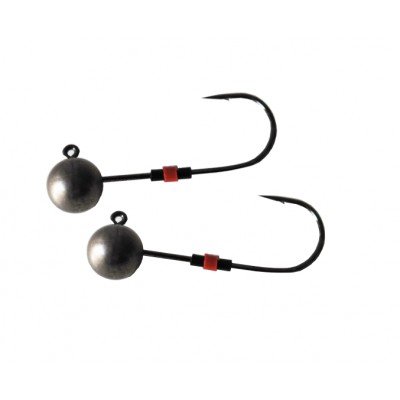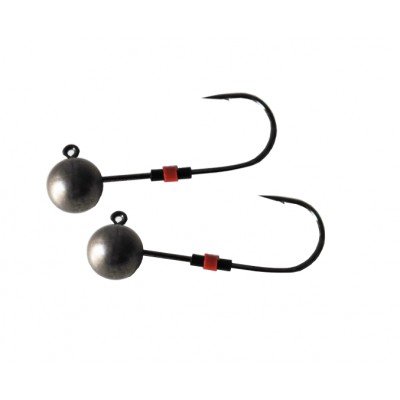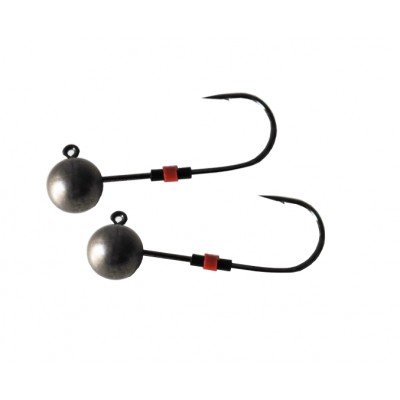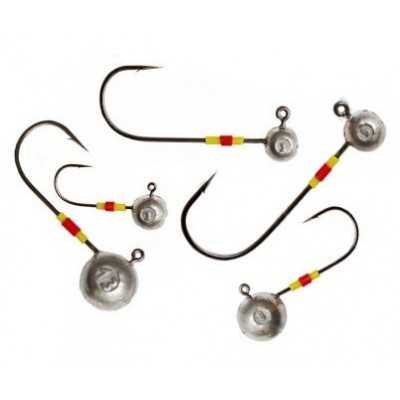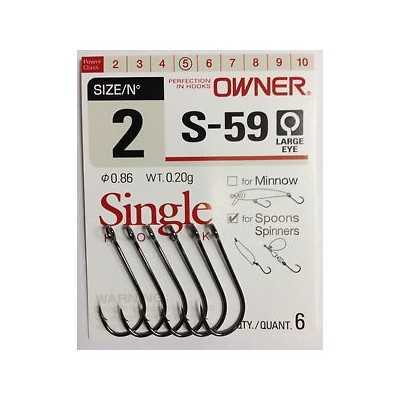Galvakabliai, Kabliai, Sistemėlės
Galvakabliai: Ką Reikia Žinoti apie Galvakablius ir Jų Panaudojimą Žvejyboje
Kas yra galvakabliai?
Galvakabliai – tai kabliai su svoriu, skirti minkštajam masalui apkaustyti. Šie masalai, ypač naudojami su guminiais masalais, padeda žvejams pasiekti norimą masalo poziciją ir užtikrina tikslų bei efektyvų žvejybos procesą. Galvakablio svoris ir forma turi įtakos masalo skendimo savybėms, todėl jų pasirinkimas yra svarbus norint pritraukti žuvis ir pasiekti geriausią žūklės rezultatą. Galvakabliai gaminami iš skirtingų medžiagų, tokių kaip švinas, volframas ar alavas, ir gali būti įvairių dydžių bei ilgių, priklausomai nuo naudojamo masalo tipo.
Švininiai ir volframiniai galvakabliai: Kuo Skiriasi?
Galvakabliai dažniausiai gaminami iš švino arba volframo, tačiau ES vykdoma žaliųjų iniciatyvų politika veda link švino atsisakymo dėl jo kenksmingumo aplinkai. Švinas, nors ir pigesnis, turi keletą trūkumų: jis yra lengvesnis už volframą, todėl tokio pat svorio galvakablio švininė galva bus didesnė ir mažiau tinkama smulkioms žuvims, tokioms kaip starkiai ir ešeriai. Švinas taip pat neturi tokių gerų skendimo savybių, kaip volframas, ir nesuskamba stipriai atsitrenkęs į kietą dugną, kas gali pritraukti plėšrūnus.
Volframiniai galvakabliai, nors ir brangesni, siūlo geresnes skendimo ir balistines savybes, todėl jie dažnai pasirenkami žvejams, kuriems svarbu tikslumas ir mažesnės masalo proporcijos, taip pat norint pasiekti didesnį gylį ar greitesnį masalo grimzdimą.
Galvakabliai: Skirtingi Ilgiai ir Klasifikacija
Galvakabliai, kaip ir kabliai, yra įvairių dydžių. Kuo didesnis skaičius, tuo galvakablis yra trumpesnis. Trumpiausi galvakabliai skirti smulkiems masalams, pavyzdžiui, #6 dydžio galvakabliai naudojami 1-2 cm gumoms, o didesni, tokie kaip #14/0, puikiai tinka didesnėms gumoms (20 cm ilgio). Skirtingi dydžiai ir ilgių pasirinkimai padeda pritaikyti galvakablį pagal žuvų rūšis, kurias norima sugauti. Pavyzdžiui, trumpi #6 galvakabliai dažniausiai naudojami žvejoti su mikro masalais, o didesni #14/0 galvakabliai skirti stambesnėms žuvims, tokioms kaip karpiai.
Fiksacija ir Kiti Galvakablių Ypatumai
Galvakabliai gali turėti skirtingas fiksacijas, kurios padeda užtikrinti, kad guminis masalas laikytųsi tvirtai. Populiariausios fiksacijos yra su termo vamzdeliais ant kablio arba spyruoklėmis aplink kablį, kurios užtikrina tvirtą ir patikimą masalo laikymą. Vis dėlto spyruoklės tipo galvakabliai yra brangesni, tačiau jie siūlo geresnį patvarumą ir ilgalaikį naudojimą.
Alavo Alternatyvos: Žalioji Pramonė
Nors švinas buvo tradiciškai naudojamas gaminant galvakablius dėl mažos kainos, pastaraisiais metais sparčiai populiarėja alavas, kuris yra lengvesnis už šviną, tačiau pigesnis už volframą. Tai ne tik atitinka aplinkosaugos reikalavimus, bet ir užtikrina geresnę žvejybos patirtį mažesnių žuvų rūšių žvejojimo metu. Alavo gaminiai vis labiau pasiekia rinką, ypač Beniliukso šalyse, ir yra naudojami kaip alternatyva švininiams galvakabliams.
Galvakabliai ir Jų Naudojimas Žvejyboje
Galvakabliai yra svarbus įrankis žvejyboje, nes jie padeda kontroliuoti masalo padėtį ir pritraukti žuvis. Žvejai, naudojantys galvakablius, gali tiksliai nukreipti masalą į norimą vietą ir užtikrinti, kad jis judėtų taip, kaip reikia. Tai ypač svarbu žvejojant su mažais guminiais masalais, tokiais kaip mikro džigai ar vobleriai.
Kur Pirkti Galvakablius?
Jei ieškote kokybiškų galvakablių už gerą kainą, internete galima rasti plačią šių reikmenų pasirinkimą. Daugelyje parduotuvių, įskaitant azukle.lt, siūlomi tiek švininiai, tiek volframiniai galvakabliai, atitinkantys skirtingus žvejybos poreikius. Pirkdami internetu galite sutaupyti pinigų ir pasirinkti iš įvairių modelių bei dydžių, kad galėtumėte pritaikyti juos pagal žvejojamas žuvis ir žvejybos sąlygas.
Apibendrinimas
Galvakabliai yra svarbus žvejybos įrankis, padedantis pasiekti efektyvų ir tikslų žvejybos procesą. Rinkdamiesi galvakablį, žvejai turi atsižvelgti į masalo dydį, žuvų rūšis ir žvejybos sąlygas. Tinkamas galvakablio pasirinkimas gali pagerinti žvejybos rezultatus ir užtikrinti sėkmingą žvejybą tiek su švininiais, tiek su volframiniais ar alaviniais gaminiais.



